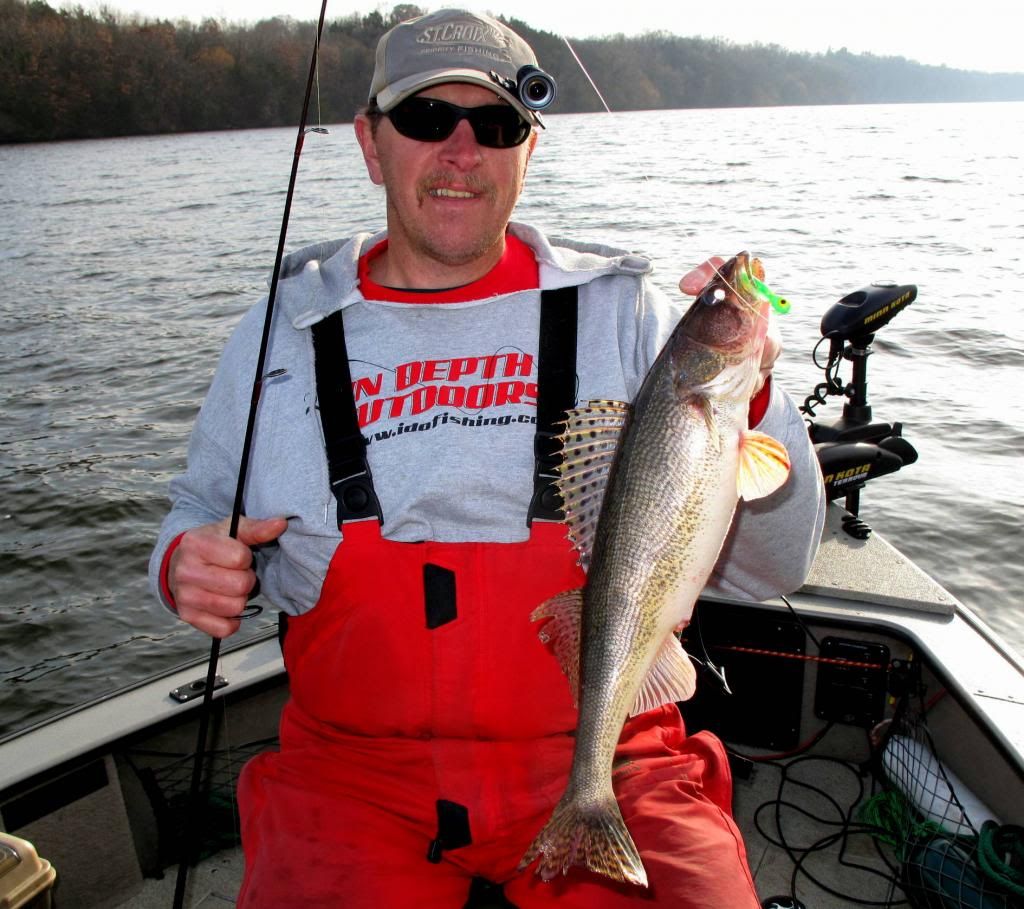I’ve caught Saugers with brown coloration and super dark spots, then caught much lighter fish 5 minutes later on the same body of water. I will say though, the fish that I’ve noticed being darkest colored are either the very small 5-10″ fish and the bigger 18+” fish.
Not saying I haven’t caught 10-18″ fish darker like that, but it does seem that the other extremes seem more common for that coloration. The only thing I can chalk it up to is a difference in diet, or even where they’ve been hanging out (depth and clarity wise). Put them in a white colored livewell for a few hours and see how they look.
My summer go to for saugers is crankbaits, but to be honest we don’t catch a ton of Saugers in the summer on pools 6-8. When I’ve attempted to catch them, I’ve had my most success near day markers where the flow is at it’s fastest and there’s deep water nearby.
I’ve caught good numbers a few times casting blade baits into 10-15′ of water near those daymarkers with good flow in the summer. I would guess any hole on the upstream time of a river bend (unless the current is cooking) would be the first place I’d look.



